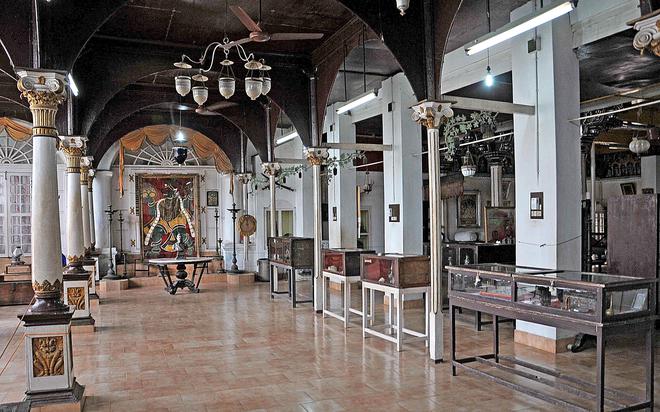
A year-long commemoration of the 225th anniversary of the coronation of Maharaja Serfoji II, the scion of the Bhosle dynasty, who ruled over the dominions of the Maratha principality of Thanjavur from 1798-1832, opened this week. The celebration has put the spotlight on the multi-faceted personality who made Thanjavur a byword for cultural and scientific accomplishments.
The celebration, launched on June 29, is being hosted by Sri Jayamala Rani Charitable and Educational Trust (SJRCET), in collaboration with Thanjavur Maharaja Serfoji’s Saraswathi Mahal Library and Raja’s Chathram Administration. The erstwhile royal family of Thanjavur hopes the events will revive interest in Serfoji’s prolific work as administrator and innovator.
“Technology has slowly deprived us of our interest in history. However, the younger generation can be really inspired by Serfoji II’s achievements that were always ahead of his time,” Prince Shivaji Rajah T. Bhosle, managing trustee, SJRCET, told The Hindu. Mr. Bhosle, a former banker, resides in Sadar Mahal Palace in Thanjavur, and has devoted himself to preserving the royal legacy in modern times.
Early years
Born on September 24, 1777 in the household of Maratha ruler Chattrapati Shivaji, Serfoji II was formally adopted by Raja Thulajah, the king of Thanjavur, on January 23, 1787. Danish missionary Reverend Christian Frederick Schwarz was put in charge of the adoptive heir’s education.
However, after the death of Thulajah, his half-brother Amar Singh usurped the throne, leaving the young Serfoji under house arrest. It was with the help of British intercession that Serfoji came to power on June 29, 1798. The help came with a caveat: Serfoji was made to cede over administration of the kingdom to the British in return for a pension and a share in the land revenue. Despite being a titular head, Serfoji II devoted himself to uplifting his kingdom in a myriad ways.
“Even today, it is astounding to see the range of Serfoji’s interests — medicine, drama, music, astronomy, cuisine, architecture, administration, printing — the list just goes on. Earlier, many of the traditional occupations were reliant only on oral transmission of knowledge; Serfoji II was among the first rulers in the area to formally document the technical expertise of the craftsmen and artisans in the kingdom and create a record for posterity,” said Mr. Bhosle.
The archival repository of the Saraswathi Mahal Library, established by Nayakar kings in the 16th century, was greatly enhanced by Serfoji’s personal collection. As one of the first native honorary members of Royal Asiatic Society of Great Britain and Ireland, from 1824, Serfoji would receive a copy of every book published there, adding to his collection of over 5,000 volumes at the library.
There are over 50,000 books and documents in the research library in various Indian and international languages. “Not many people are aware that but for the effort of Maharani Kamakshi Bai, the widow of King Shivaji II, this valuable resource would have been seized by the East India Company in the 1800s, and its contents shipped to England,” said Mr. Bhosle.
Serfoji’s interest in medicine was seen in the multi-disciplinary hospital Dhanvantri Mahal, as also by his research into ophthalmology. Besides promoting women’s education through the Navavidhya Kalanidhi Sala, he established a hand press for the Devanagri script in 1805.
He wrote hundreds of songs in Tamil, Telugu and Marathi, set to be performed at music and dance recitals, and also experimented in fusing Western and Indian classical music traditions.
Serfoji II had the history of the Bhosle dynasty inscribed on the south western wall of the Brihadeshwara Temple, a feat considered among the largest inscriptions in the world. The royal paid equal respect to all communities in his dominion, by building churches and mosques for Christians and Muslims, and patronising the upkeep of shrines built by other dynasties.
“Over the coming year, we hope more people will rediscover the unique talents of Serfoji II, and learn to appreciate his efforts to serve Thanjavur and its people,” said Mr. Bhosle.







